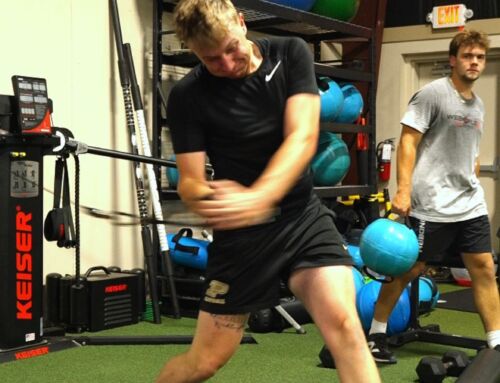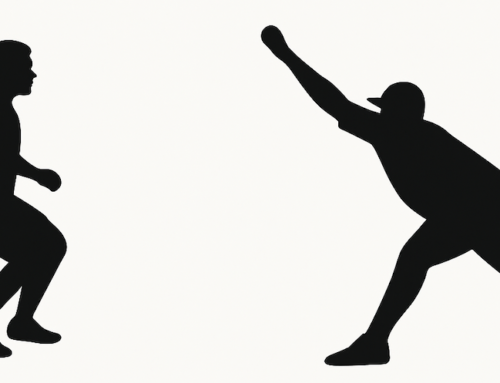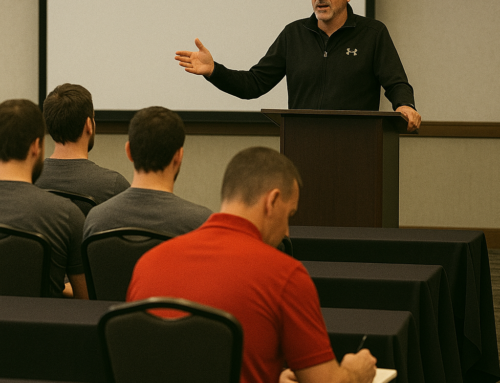
Arm Health: Beyond Pitch Counts… And All The Usual Suspects
In 2007 Little League Baseball became the first national youth baseball organization to implement and enforce pitch count limits and associated required rest periods based on age.
Ten years later, pitch limits appear to have done very little to quell the rise of arm injuries among youth baseball players.
Last spring, the National Federation of State High School Baseball Associations also implemented rigid pitch counts and rest rules. While limiting pitches per outing among high school age players may be a noble and well-intentioned proposition, my prediction is that it will have very little effect on solving the problem.
My friend Dr. Ed Fehringer sent me the link to a recent study in the Orthopedic Journal of Sports  Medicine. Are the Current Little League Pitching Guidelines Adequate? A Single-Season Prospective MRI Study
Medicine. Are the Current Little League Pitching Guidelines Adequate? A Single-Season Prospective MRI Study
Researchers took pre- and post-season MRIs and physical examinations of the elbows of 26 Southern California youth baseball players (ages 10-13) who were “100% compliant with Little League pitching rules.” At the end of the season, despite full adherence to pitching guidelines, 48% of the subjects had abnormal MRI and physical exam findings and 28% experienced pain during the season.
Investigators appeared perplexed by the results.
Unable to indict pitch counts as a clear culprit, their conclusions pivoted to the usual suspects: year-round throwing, single sport specialization, and curve balls.
But wait…
Can they really make that claim?
The subjects had clean MRIs prior to the season in question.
If year-round throwing and early specialization were at fault, wouldn’t the pre-season examinations have shown it?
It’s the same approach MLB appeared to take a few years back when they found themselves in the crosshairs of an injury surge. “These injuries aren’t our fault,” they declared. “These kids were damaged goods — overthrown by their youth and travel ball coaches — before they ever got to us.”
But in the case of this particular study, any pre-existing conditions due to prior overuse were ruled out by the pre-season testing. The design of the study guaranteed that any changes seen must to have occurred during the season in question.
Here’s the problem as I see it:
Like nearly all the studies I read on this topic, researchers start with the assumption that all throwers are the same. They laser-lock on workload as the primary problem, while disregarding the potential effects of physical constraints, mechanical efficiency, or preparation, training and recovery shortcomings.
I recently completed the ASMI’s Injuries in Baseball Online Course which was a fascinating odyssey into the depths of the anatomy and physiology of arm injury. During one of the lectures, Dr. James Andrews himself states that, “The number one risk factor in injuries is still poor mechanics.” Yet his colleagues in throwing-related medical research perpetually ignore or sidestep this fact, continually citing “overuse” as the leading cause of youth throwing injuries.
At the Florida Baseball ARMory and in my physical therapy practice, not a week goes by that I don’t see an injured thrower who’s parents report that he had thrown very little prior to getting hurt. “I don’t how this happened,” they say. “He hasn’t pitched very much at all.” In the current study, “2 of the 3 most severe abnormalities (medial epicondyle fragmentation and UCL tear) were seen in players who pitched less than 2 innings the entire season.”
Does that sound like a workload problem to you?
Listen, if your delivery is connected, you’re relatively free from physical constraints, you’re conditioned and well prepared, and your training habits are promoting a healthy, durable arm, then you might be able to throw a very high number of pitches without negative consequence. However, if those variables are not in order, as few as 10 pitches might be too much for you.
Here’s why pitch counts and innings limits will never solve the arm pain and injury problem.
Science will never be able to control for the infinite number of permutations in human variability. Science is great. Science is necessary, but science assumes its methods, and large random sample sizes are adequate in neutralizing uncontrolled variability that exists among throwers. I don’t believe it would be possible to have a sample size large enough to dilute the effects of all the possible differences between individuals.
Not all throwers throw the same way.
Not all throwers are trained the same way.
Not all throwers are the same.
Physical constraints, movement patterns, preparation, recovery, and training habits are much more important than the number of throws made. Admittedly the design of this study (pre-and post-season MRI and physical evaluations) should have also identified or eliminated any pre-existing physical constraints or mechanical flaws that might have been contributors. So, that leaves preparation, recovery, and other training related variables as the only possible explanations for the findings.
The central question we need to ask of the 12 players with abnormal post-season exams and/or arm pain is, “What happened during the season?”
How did they prepare for their outings?
Did they throw bullpens between games? If so, what did those sessions look like?
Did they have a recovery plan or did they pitch in games and then go into total rest for the remainder of the week?
What was the quality of their warmup?
What was the quality/nature of their instruction?
Did they play for a coach or coaches who did a lot of towel drills, taught them to “get their elbow up”, or get extension?
Did they engage in any other kind of training such as weight lifting or long distance running that could have had an influence on the outcome of the season.
Dozens of other questions need to be asked and investigated before we can make the HUGE inferential leap to say that year-round, throwing, early specialization, or throwing curve balls were responsible.
In my opinion, not only does this study once again shed light on the confirmation bias that pervades much of the medical research done in baseball today but it also brightly illuminates the futility of pitch counts and innings limits as a primary means of mitigating injury risk in throwing athletes.
futility of pitch counts and innings limits as a primary means of mitigating injury risk in throwing athletes.
I am not against reasonable workload thresholds, but when you present “overuse” as the primary “cause” of arm injuries in youth baseball players, you risk giving parents, players, and coaches the false sense of security that one need only purchase a pitch counter and he’ll be shielded from injury forever…
And that couldn’t be further from the truth.
Please… Let’s dig a little deeper into the injury problem than that…
And let’s Start With The Pain.
Get your copy of my latest book and video, Start With The Pain: The Complete Guide To Managing Arm Pain In The Elite  Throwing Athlete by clicking here.
Throwing Athlete by clicking here.
It’s the first product in the baseball training industry to present a comprehensive, actionable, and easy to implement process for managing arm pain and injury in baseball players.
We can’t wait to see you at The ARMory.
Get started by calling, our CFO/COO Amy, at 866-787-4533.
We’ll see you at The ARMory.

Randy Sullivan, MPT, CSCS CEO, Florida Baseball ARMory




